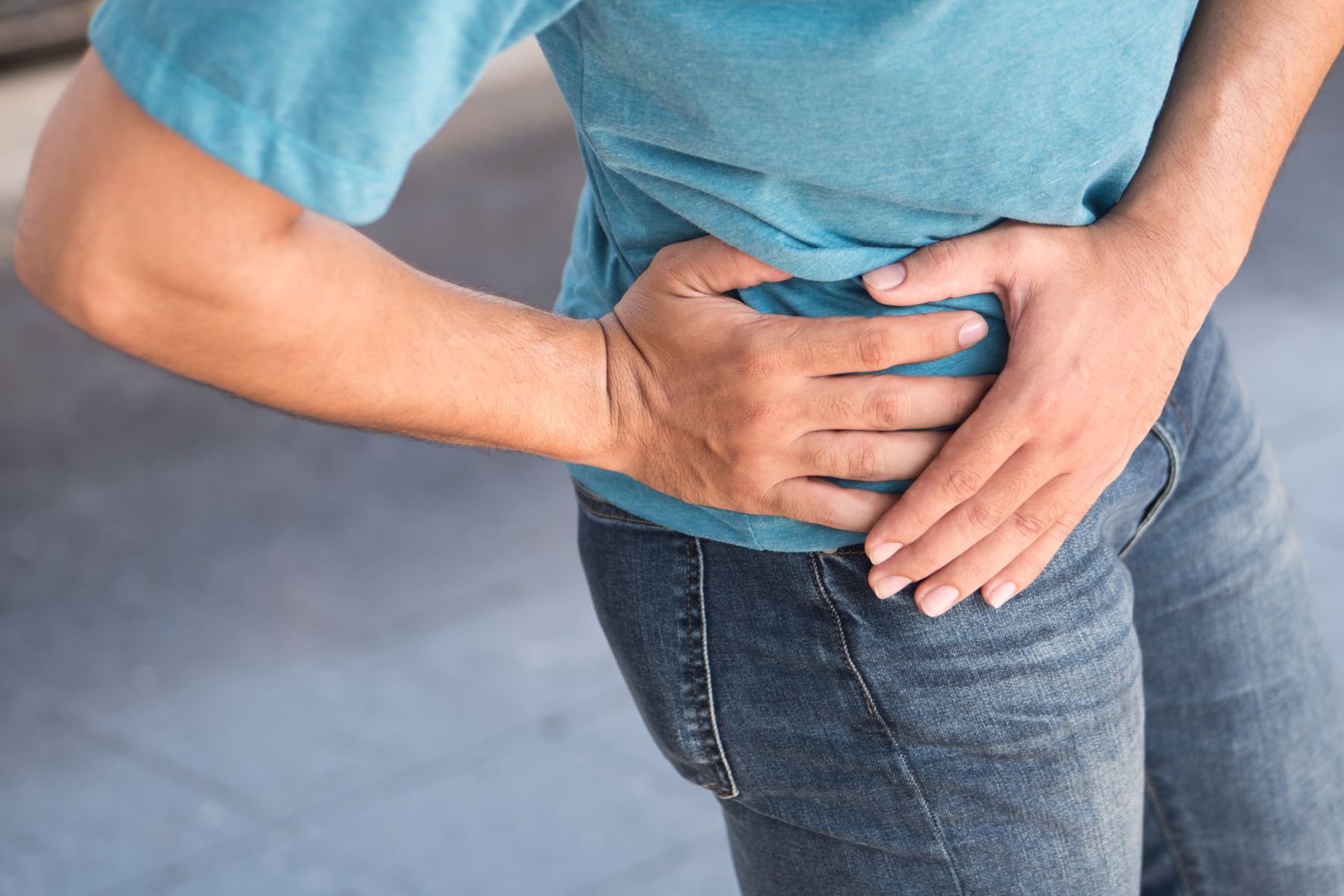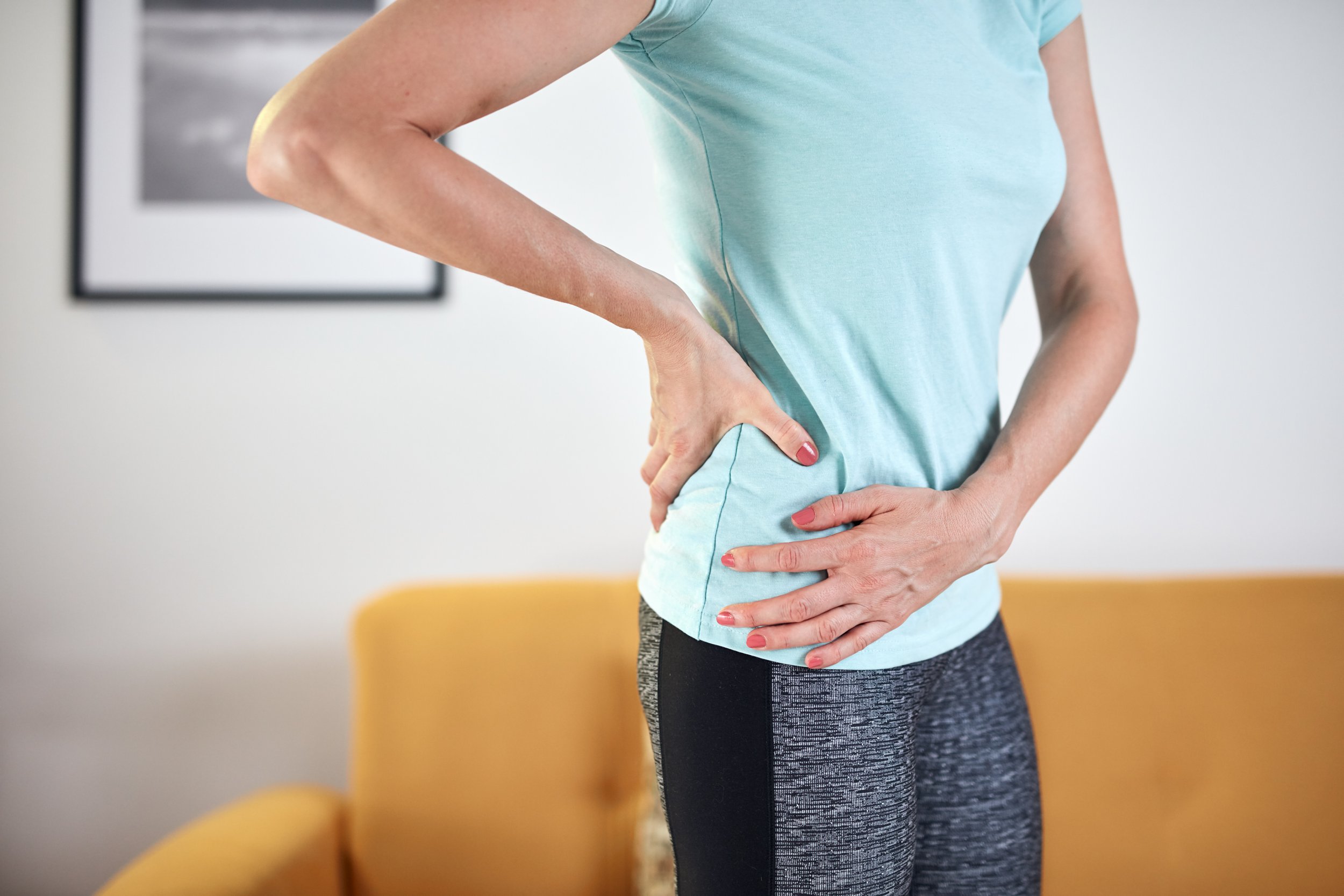What’s Causing Pain in the Front of My Hip?
There are many potential causes of pain in the front of the hip, also called anterior hip pain. Sometimes it’s the result of an overuse injury like hip flexor strains or bursitis, but it can also be caused by a joint disease like osteoarthritis.
Keep reading as we dive deeper into some of the injuries and conditions that could be the source of your anterior hip pain.
Hip Osteoarthritis
Osteoarthritis of the hip occurs when the cartilage that covers and cushions the ball-and-socket joint breaks down over time. Eventually, this results in bone-on-bone rubbing – causing pain and stiffness in the hip.
There are a number of factors that can contribute to the development of hip osteoarthritis. Age is one of the most significant risk factors; as we age, our joints begin to wear down from years of use. Other risk factors include obesity, previous hip injuries, and genetics.
The symptoms of hip osteoarthritis develop gradually over time and include the following:
Hip pain, particularly in the groin area, but also on the side or lower back
Pain and stiffness that is worse in the morning or after sitting for an extended period
Grinding or crunching noise when moving the hip
Limited range of motion
Difficulty walking or completing daily tasks
There is no cure for osteoarthritis, but if diagnosed and treated early, many people can conservatively manage their symptoms and slow down the progression of the disease.
Dr. Cafferky of The Steadman Clinic specializes in hip osteoarthritis and total hip replacements. Whenever possible, he and his team will work with you to design a nonsurgical treatment plan that helps you continue — or return to — the activities you love most.
If there comes a time when conservative treatments are no longer effective and your quality of life is negatively impacted, he may recommend hip replacement surgery to help you get back to living life to the fullest.
Dr. Cafferky's total hip replacement patients often report that they:
Have little to no pain
Can walk and move with ease again
Have resumed exercising
Are stronger
Are more independent
Have returned to the activities they love
Have a much better quality of life overall
Learn more about total hip replacements.
Other Causes of Anterior Hip Pain
Many different injuries could be the source of hip or groin pain. If you've been experiencing persistent pain, it's time to see an orthopaedic specialist to determine the root cause and get the proper treatment.
Hip Flexor Strain
Your hip flexor is the group of muscles that attach your thigh bone to your pelvis and lower back and help you lift your knees upwards. A hip flexor injury occurs when these muscles become strained or torn.
Hip flexor strains can affect anyone but are common in athletes who repeatedly bring their knees up toward their body, such as runners, dancers, and soccer players.
Symptoms may include:
Pain in the front of the hip
Tightness of the hip
Swelling or bruising
Muscles spasms
Hip Labral Tear
A hip labral tear occurs when there has been an injury to the labrum, a ring of cartilage surrounding the hip socket. Labral tears are often caused by repetitive motions that put stress on the joint. These activities can cause the cartilage to wear down over time, eventually leading to a tear.
Symptoms of a hip labral tear include:
Pain in the hip or groin, especially while walking or running
Reduced range of motion
Stiffness
A "locking up" sensation
Hip Impingement
Hip impingement, also referred to as femoroacetabular impingement (FAI), is a condition where either the ball or the socket of the hip joint (or both) develops abnormally. In a healthy hip joint, these two bones move smoothly together during movement. When it's not a good fit, as with hip impingement, the result is the two bones rubbing against each other. This creates excess friction and, eventually, leads to pain and stiffness.
In most cases, hip bone abnormalities are something a person is born with or develops at a young age. Although exercise doesn't cause hip impingement, active people or athletes may be at a higher risk due to repetitive movements.
People with hip impingement often experience:
Pain in the groin area
Pain that worsens with activity
Limping
Stiffness
Hip Bursitis
Your bursa is a small, fluid-filled sac that acts as a cushion between the bones and tissues of your hip. Bursitis occurs when that sac becomes inflamed. Hip bursitis is often seen in people who participate in activities involving repetitive motion, such as running or cycling, and is more prevalent in women than in men.
Symptoms of bursitis include:
Pain on the side of the hip or in the groin area
Pain when lying down on the affected side
Pain when you press on the hip
Pain that worsens when walking or climbing stairs
Contact the Leading Hip Orthopaedic Surgeon in Colorado
Are you ready to live a pain-free and active life again? Contact Dr. Cafferky and his team at The Steadman Clinic today.
As the foremost experts in hip osteoarthritis and joint replacements, they are dedicated to getting residents of our mountain communities and beyond back to the activities they love most.
Team Cafferky offers appointments at Vail, Edwards, and Frisco clinics.
Here are three easy ways to schedule an appointment:
Call (970) 476-1100
Submit an appointment request online
Request a virtual consultation




